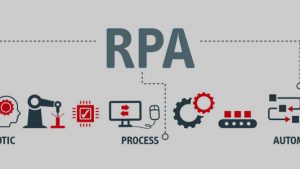Good Practices in Achieving Procure to Pay Efficiency

A standard procure-to-pay process involves so many moving parts and stakeholders that streamlining things for efficiency could be strenuous. Poor supplier relationships, lack of transparency, outdated systems, absence of employee accountability, low levels of compliance, human error, and delayed timelines are just a few of the many challenges slowing down the procure-to-pay process. P2P transformation therefore is one of the top priorities as enterprises can then more effectively capture value through automated and compliant buying, improving the experience for employees and suppliers, increasing efficiencies across purchasing and accounts payable, and much more.
Common Procure to Pay Challenges
Siloed P2P Processes and Team
According to a recent report, 80% of enterprises still use manual or semi-digital tools to manage their P2P function. Every department within an organization follows its priorities and workflows. Lack of coordination and communication between different departments make it difficult to consolidate data across the business and bring uniformity to the systems and processes which leads to inefficiencies and errors.
Lack of Flexibility in P2P Processes
For innovation to happen in an organization, being agile is imperative. This is especially true in the Procure to Pay function, where enterprises often have a very dynamic relationship with their vendors and often engage in procuring items which are away from the ordinary, like a new technology or service belonging to an altogether new category. Being new category purchases, these would be out-of-contract buys and would require the contracts to be updated. Updating contracts and catalogues, however, can be a time-consuming activity which can delay an organization’s productivity. P2P tools therefore need to have the flexibility to scale based on the growth and changing demand of the organization.
Non-Adherence to Compliance
Procurement policies are bypassed by employees to avoid multiple rounds of approval for every request. Besides, different teams involved in the process—like procurement and accounts payable—often breach the terms of the contract because of the lack of clear and real-time communication between them.
Lack of Transparency
Visibility into procurement expenditure is necessary as without that the departments can easily overspend on their requirements. The lack of records to track each department’s spending leads to minimal data transparency, hampering the overall decision-making process and resulting in spending leakages.
Poor Supplier Relationships
Enhancing supplier relationships is a good way to reduce future problems and minimizing supply chain risk. According to a recent global survey, 42% manufacturers expect to strengthen relationship and increase transparency across their supply chains.
P2P Digital Transformation
Procure to Pay digital transformation can take the tedious elements out of the picture and ramp up your operational efficiency. P2P transformation will help maintain superior supplier relationships, improve strategic decision-making, and create transactional transparency.
Digital transformation solutions not only enable efficient processes but also help procurement teams to play an important role in accelerating enterprise innovation. The key functions being looked at for automation include:
AP Automation solutions
Solutions that automate the invoice to pay process are being adopted in an accelerated manner. The solution enables auto posting of invoices, keeps a strong audit trail of workflows and delivers various reports that provides visibility on invoice and payment status to both internal stakeholders as well as suppliers.Touchless processing of invoices is one of the key drivers of a streamlined P2P process, helping to reduce late payments, supplier enquiries, and operating costs.
Information Management
Information is the lifeblood of procure to pay function. Procurement contracts, supplier proposals, invoices, lorry receipts, approvals and several other information is across physical and electronic formats in multiple systems. Information is not found when required. Enterprises are adopting information and workflow management solutions in a frenzy to manage procurement better.
Supplier Onboarding
Enterprises need to put in place a digital onboarding process to monitor supplier requests, supplier profiling and segmentation, as well as approval workflows to automate and track supplier onboarding approvals.Enterprises are increasingly using self-service portals for suppliers, agents, and buying teams to collaborate during the sourcing process. The master data creation process is being automated to ensure cleanliness of supplier masters for effective reporting.
Supply Planning
Enterprises can seamlessly share real-time supply forecast updates electronically with supply partners (suppliers, factories, and agents) through automated systems. This enables factories to analyze fluctuations in demand and plan-ahead collaboratively.
Order Issuance
The order issuance process needstotal automation. Suppliers need real time visibility to orders issued and enterprises need to automate the order confirmation and order status process to have timely visibility of the delivery schedule.
Reverse Auctions
The cost of procurement can be significantly brought down with reverse auctions, as prices are determined in a much quicker manner during live auctions rather than traditional long-drawn negotiations.
Robotic Process Automation
Enterprises are employing RPA to automate repetitive administrative tasks in supply chain processes and integrating and automating data-driven activities as well. Some of the RPA use cases in supply chain are in the areas of order processing and payments, supplier selection, email automation, inventory management, logistics and shipment tracking, supplier onboarding, sales order creation among others.
Advanced Analytics
Advanced analytics are gaining popularity in being deployed in areas such as product quality testing, dynamic pricing etc. The availability of real-time supply chain data such as dynamic sales data and weather patterns provides the ability to make accurate predictions and recommendations.
Digital Signature
As enterprises continue to carry out their processes virtually,digital signatures present an effective solution to accelerate processes and maintain transparency.
Artificial Intelligence
Through self-learning and natural language, AI solutions can help automate various processes in the P2P function. According to a recent survey, 61% of executives report decreased costs and 53% report increased revenues as a direct result of introducing artificial intelligence into their supply chains. AI provides enterprises with end-to-end visibility, reduces manual work and facilitates informed decision making.
Enterprises are fast tracking automation of the procure to pay function with digital. They realize that this is the foundation to accelerating the pace to recovery in the new world order and could deliver a significant competitive advantage when done early.













